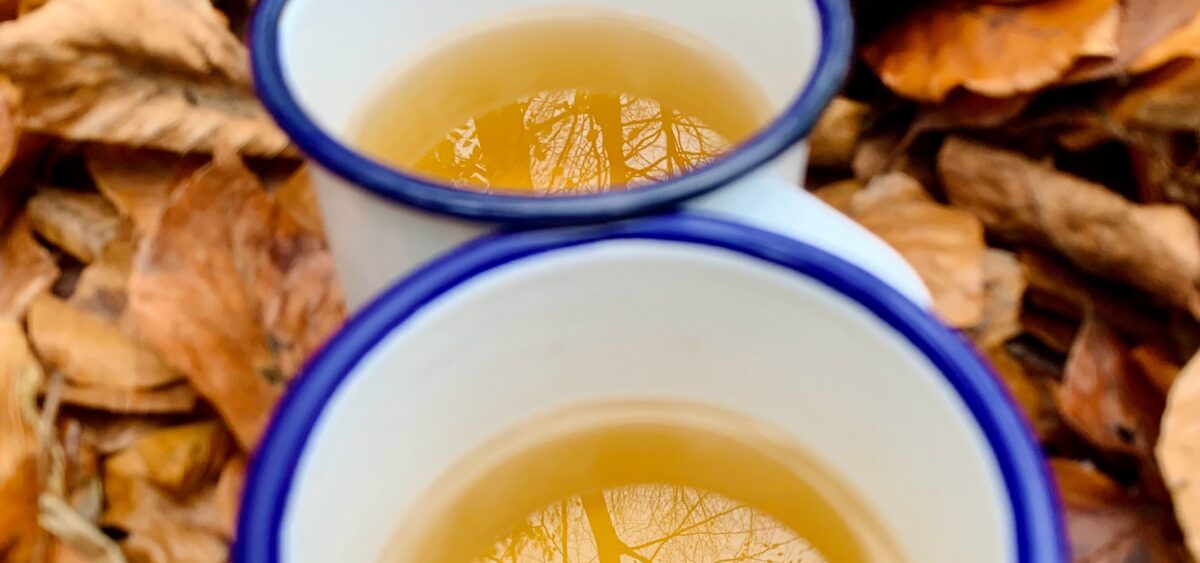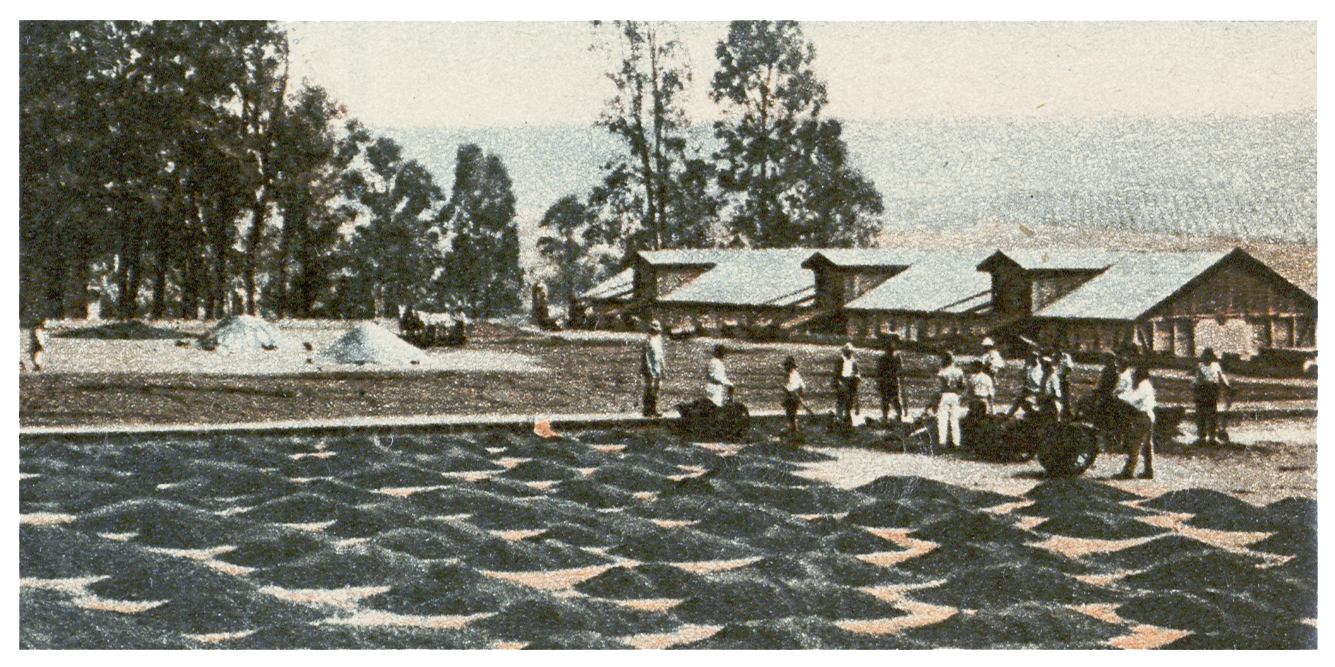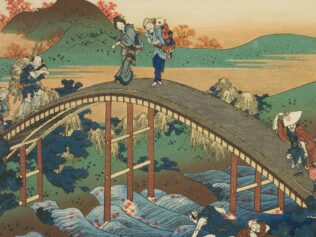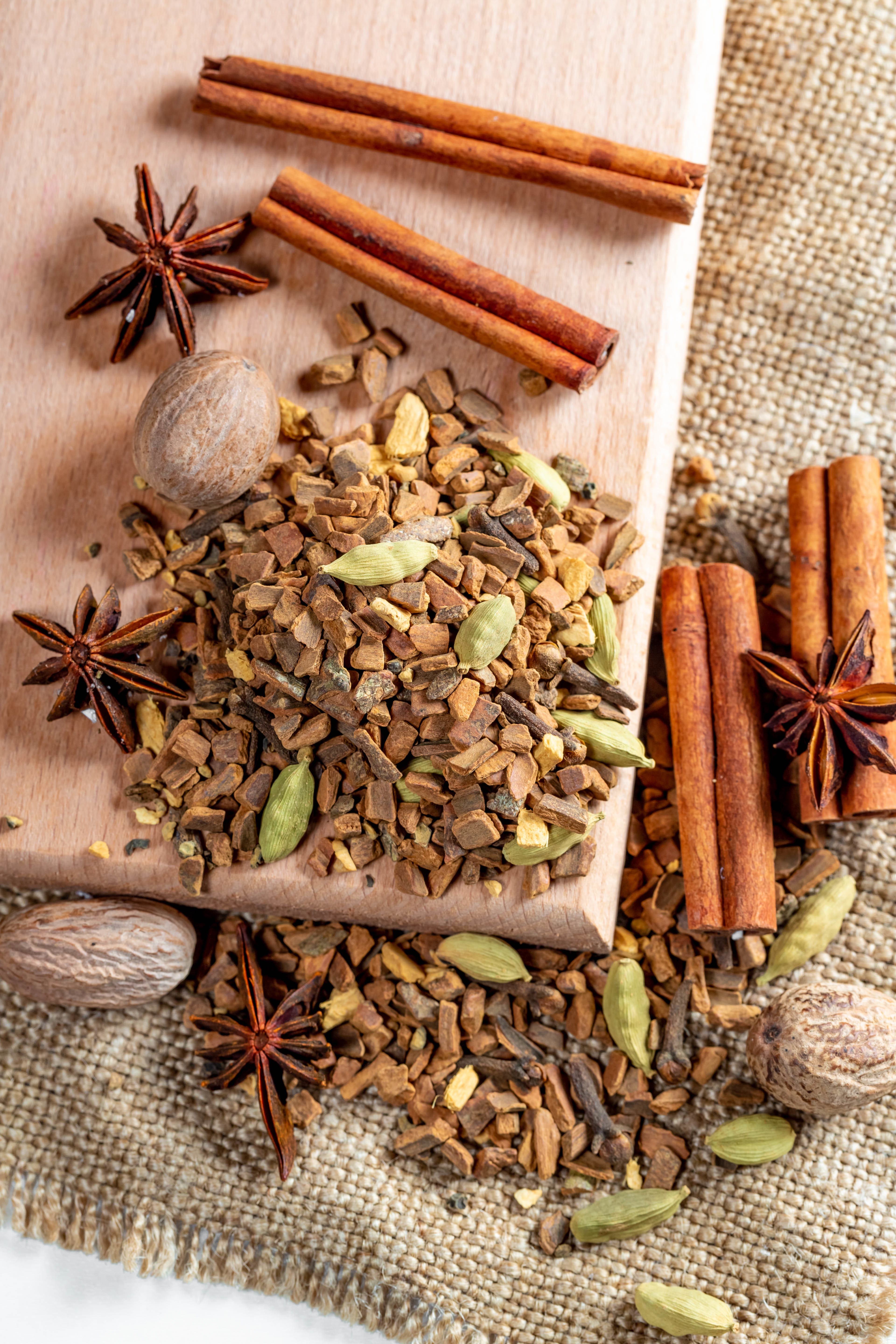
Despite its mundane appearance, each cup of tea is produced thanks to the sophisticated power of chemical particles and aging processes, both of which ultimately give drinkers strength and stimulate the senses.
According to legend, when Bodhidharma, the monk who brought Chan Buddhism to China, arrived at the Shaolin monastery, he was not permitted inside. Frustrated, he headed for a nearby cave, where he meditated incessantly for nine years. After seven sedentary years, he became sleepy, and even though he only closed his eyes for a moment, when he woke up his heart was filled with disgust at his own weakness. In anger, he grabbed a knife and cut off his eyelids, so that sleep would never again disturb his meditative trance. The cut-off skin fell to the ground and immediately started to sprout, giving rise to the first two tea shrubs. From then on, monks could take advantage of tea to fend off tiredness and the desire to sleep.
The Tea Map
The real story of this infusion—one of the most common, made almost everywhere in the world in countless ways—is probably much more prosaic. The effects of tea, as well as that of many other plants whose active ingredients turned out to be beneficial to humans, may have been discovered by accident. Someone might have imbibed a brew of this unknown plant and observed unusual excitement in themselves. It is also possible that humans observed animals using tea leaves for various ailments since animals not only use plants to self-medicate, but also inspire us to copy them.
Nowadays tea, next to coffee, is the most common plant extract drunk to revitalize the body, fend off fatigue, and improve brain function. Although in some parts of the world tea is treated as a side dish at best, for many societies it is a key element of the culinary routine. Starting from China and Japan, through Great Britain and its former colonies (such as India), and concluding with Slavic countries (like Poland, Russia, and Ukraine) and Arab states, tea often plays a traditional role and is regularly offered to visitors.
The intricacies of the tea tradition could fill a bloated volume. One could find there details of tea ceremonies from different cultures, and also all the rules—written ones, as well as those passed on orally—according to which one is supposed to prepare and drink this infusion. Here, however, I will take a closer look at the labyrinth of varieties, subspecies, and qualitative classifications of the plant. It is worth knowing, though, that there is no such thing as “ordinary” tea.
Let’s start with the fact that even the biological source of dried tea leaves is ambiguous. Taxonomically, tea constitutes leaves of plants from the Camellia sinensis (Chinese tea) family. It is an evergreen shrub, more rarely a tree, found naturally in East Asia, in the border areas of China, Myanmar, and India. However, tea sold in regular stores usually lists two varieties of Camellia sinensis in its ingredients: classic sinensis, with relatively small leaves; and assamica, with large leaves, cultivated in a few places including India and the Chinese province of Yunnan.
There is also the Camellia assamica subspecies lasiocaly, which is cultivated in Cambodia and was probably derived as a hybrid of simensis and assamica. The two aforementioned main varieties of tea were probably separated from each other around twenty to twenty-two thousand years ago. The evolutionary history of these plants is thus very long and most probably reaches much further than its domestication by humans and subsequent culinary use.
It’s worth adding that there exist many plants which are commonly referred to as “tea,” such as rooibos, yerba mate, sassafras, and various herbs and dried fruit. Some of them also contain the word “tea” in their name, like the Australian tea tree Melaleuca alternifolia, from which essential oil is made. None of these, however, have anything to do with real tea. After all, there can only be one queen.
A Rainbow of Tea
Upon examining the richness of all known varieties of the drink, one can get the impression that they’re dealing almost with a rainbow. In much of Europe and North America black tea rules, although this color refers to its dry form; its infusion is amber-orange. The choice is far wider, though—there are green teas (the closest to the original sipped in Asia at the beginning of tea history), yellow teas, blue teas (more commonly known as oolong), white teas, and red teas, although when dry these are usually russet black.
Not a lot of these names have much to do with the real color of the infusion or the dry leaves. Green tea has a green color before brewing, but as an infusion is usually yellowish or almost colorless. Dry oolong becomes turquoise, but is far from blue—the name comes from the French word for this kind of tea, thé bleu. White tea is almost as green as green tea—as part of the production process, a whitish fluff often remains on its leaves. What actually differs between the various types of teas is the processing and resultant chemical composition of the dried leaves.
All varieties of tea contain substances, xanthine derivatives, which actively stimulate the central nervous system. The best known compound in this group is caffeine, the same one as in coffee beans. Even though the caffeine content in dried tea exceeds its concentration in coffee beans, the former supplies the body with a smaller dose of it because less plant matter is usually used to brew a cup of tea. Apart from caffeine, tea also contains small amounts of theobromine and theophylline, which also have stimulating effects. Black and white teas are the most rich in caffeine, while green and white ones are the least. The most significant compounds when it comes to taste, and simultaneously the substances which distinguish the various colors of tea, are called polyphenols. These constitute a very diverse group of substances. Their concentration in tea, and thus the tartness and “fullness” of taste in the brew, changes dramatically during the processing of the leaves.
The long journey the tea has to travel before ending up in a teacup starts with the leaves being picked from the shrub. The simplest processing method is that used for green and white tea. These are essentially dried and “heat-fixed” leaves, and the content of active substances in them is similar to that in fresh leaves. Their main polyphenols are catechins, including epigallocatechin gallate and epicatechin gallate. In order to obtain green or white tea, it is important to prevent the oxidation of polyphenols, which are located in the green parts of the plant. To avoid oxidation, the leaves are picked gently, so as not to damage them. They are then “fixed” with hot steam (in the case of many green teas) or hot air (in the case of white teas). This process damages the oxidizing enzymes contained in the leaves, yielding products of a fairly mild, grassy taste. Afterwards, the leaves just need to be rolled, thoroughly dried, and then they’re ready. The same treatment can be given to the stems and green twigs in order to obtain kukicha (also known as bōcha), which is a tea of nutty, sweet taste. In addition, grinding dried green tea creates the powder known as matcha, used in the traditional Japanese tea ceremony.
Another stage can be added to the production process: maturing fixed tea in damp conditions for a few days. This consists of repeatedly heating and cooling the plant, leading to the yellowing of the leaves and the creation of yellow tea (Chinese huang cha and Korean hwangcha). In the course of this process, some polyphenols quickly and partially oxidize, which gives the tea a sweetish, very mild taste and straw-yellow color.
The most changes occur in the production process of black tea (referred to as “red” in China) and teas from the oolong group. Their leaves contain large amounts of complex polyphenols from the theaflavin and thearubigins groups. They give the infusion a pungent taste and a darker color, and are created during the enzymatic oxidation of simple polyphenols, which occurs during the first stages of leaf processing. Straight after picking the tea is macerated, which releases the oxidizing enzymes contained in its cells. In the case of black teas, the maceration proceeds quite violently and leads to major damage to leaf tissue, resulting in the oxidation of almost all polyphenols. In oolong teas, the leaves are lightly tossed upwards in bamboo baskets, which contributes to partial oxidation—their polyphenols thus resemble a mixture of those in green tea and those totally oxidized.
Contrary to popular belief, the oxidation processes involved in the production of dark varieties of tea have nothing in common with fermentation, since they occur due to the action of enzymes and without the participation of microorganisms. The final stages are similar to those used in the production of unoxidized teas: the leaves are fixed to interrupt oxidation, then dried and shaped into the final product (oolong is sometimes additionally roasted over charcoal, giving the infusion spicy, smokey, and woody notes).
An Intriguing Enzyme
In the tea drinking subculture, the stage of fermentation is frequently mentioned. It turns out, though, that the most commonly-drunk teas—green, white, black, and oolong—are not processed with bacteria and fungi. As mentioned earlier, the mystery of their taste lies in the use of enzymes, which occur naturally in plant tissue. A particular group of green teas, however, may undergo additional aging processes using various microorganisms, such as bacteria and molds. This aging results in red teas, (known as “black” or “dark” in Chinese). Pu-erh (or pu’er) is one such product of a final fermentation stage. Teas from this group have their own classification, the scope and complexity of which can make one’s head spin.
It looks as though there’s much more behind the simple bag of black, powdered dry leaves, onto which many of us so unceremoniously pour hot water each morning. And this is only the tip of the iceberg. Behind the gates of the tea world lies the whole history and philosophy of this extraordinary drink, a veritable labyrinth of brewing techniques, the secrets of quality classifications based on the characteristics of the leaves picked from the shrub. The boundless richness of tea flavors can perhaps only be compared with the variety of wine tasting notes. While exploring the tea universe one may even come across laphet—a pickled or marinated tea, one of the most famous delicacies of Myanmar cuisine, often served with spicy or salty snacks.









